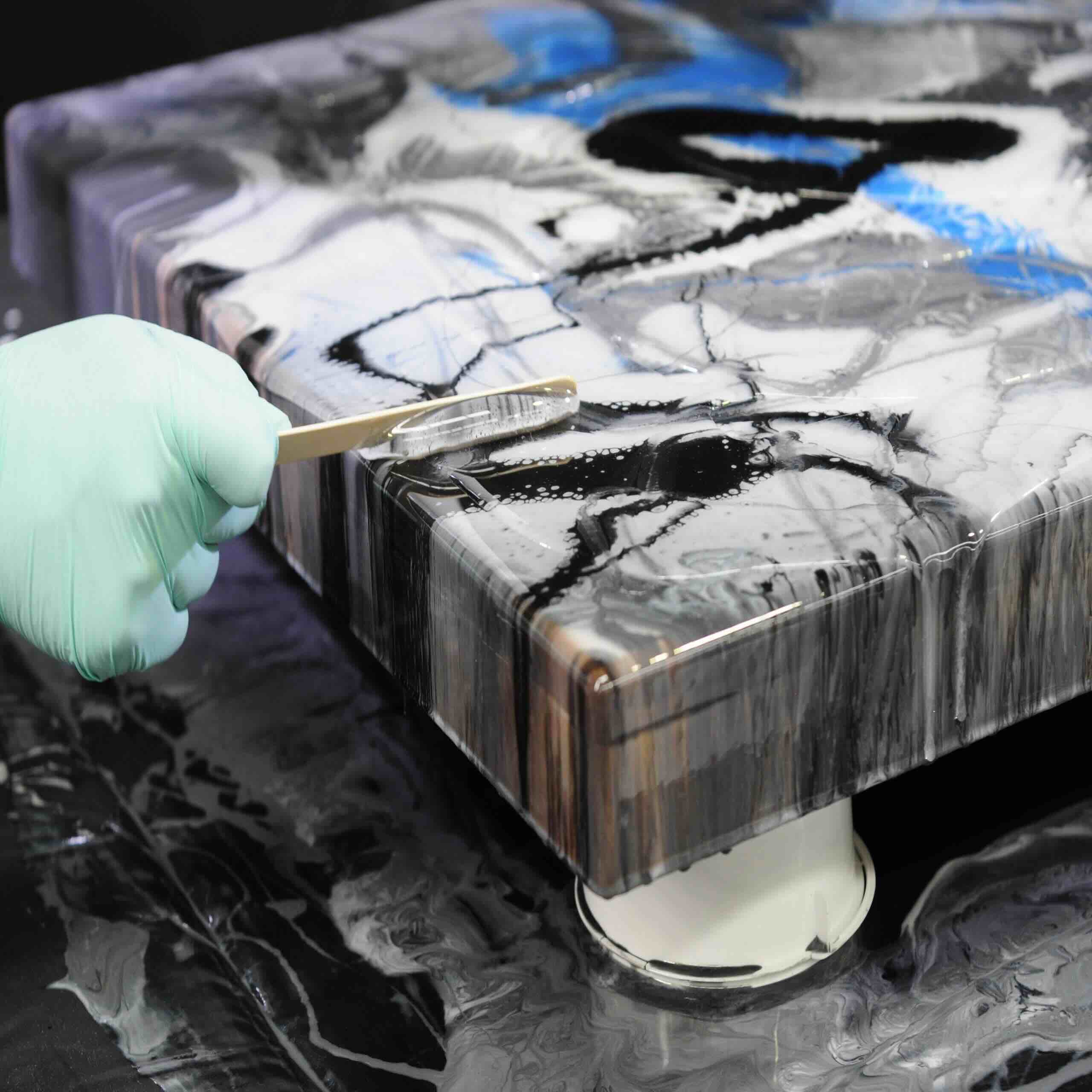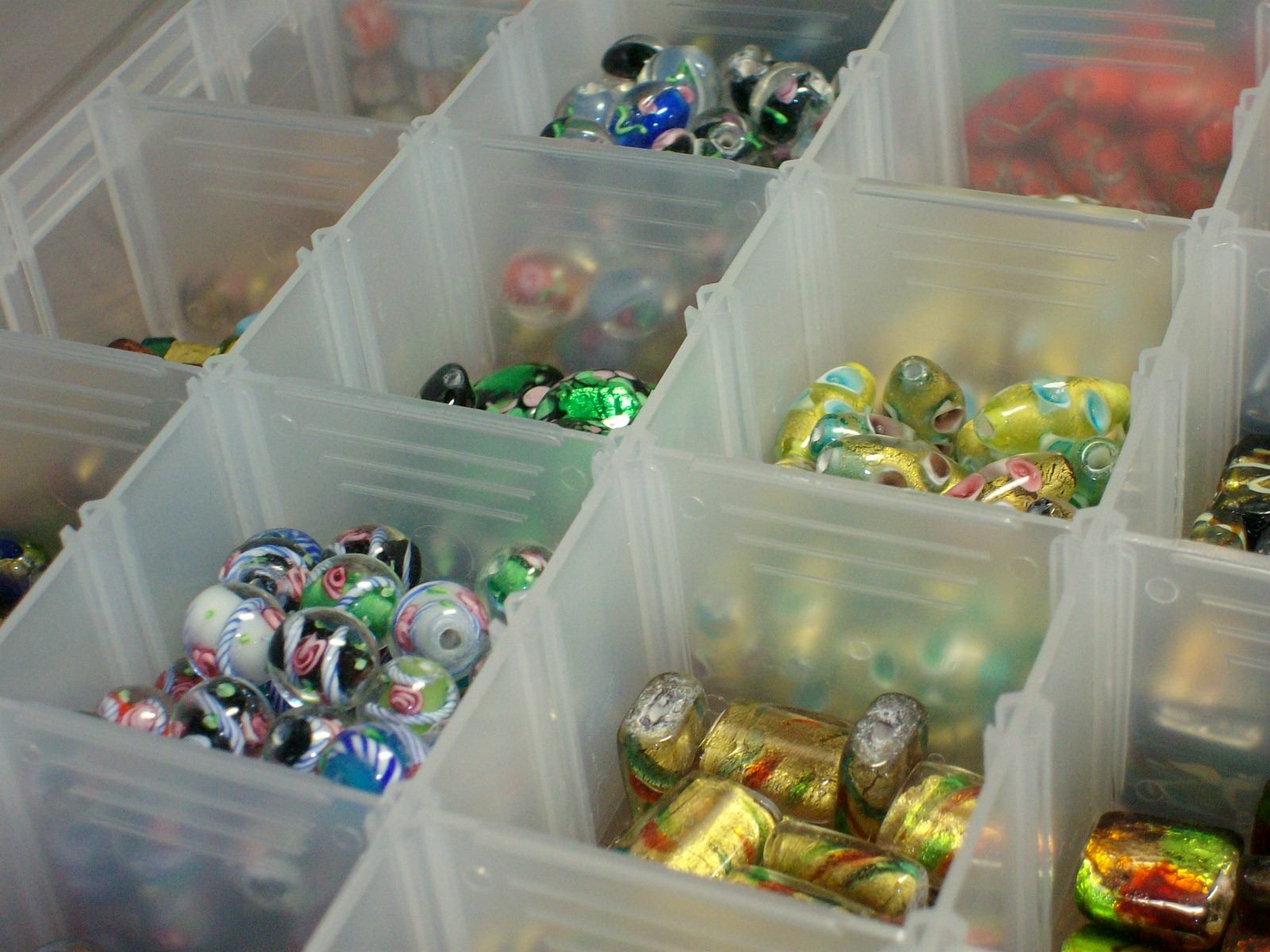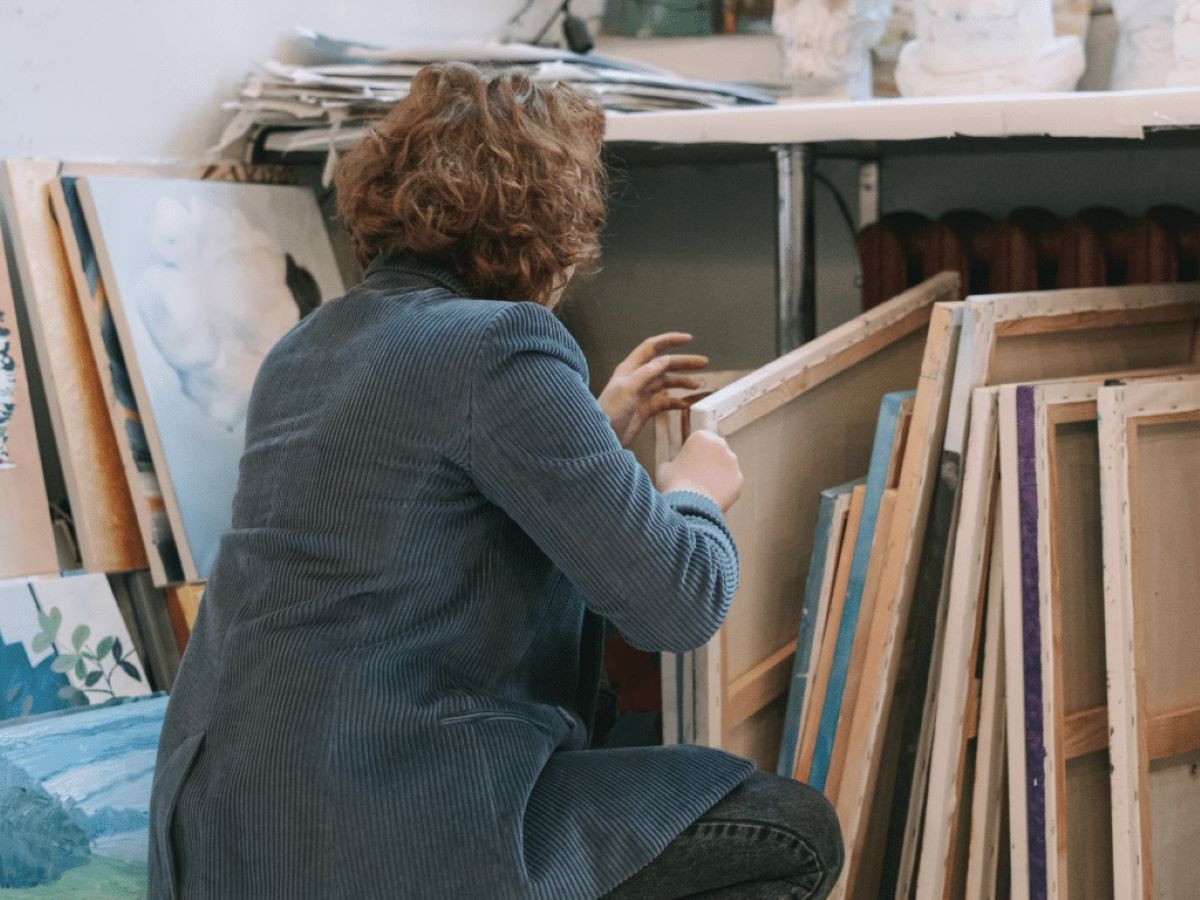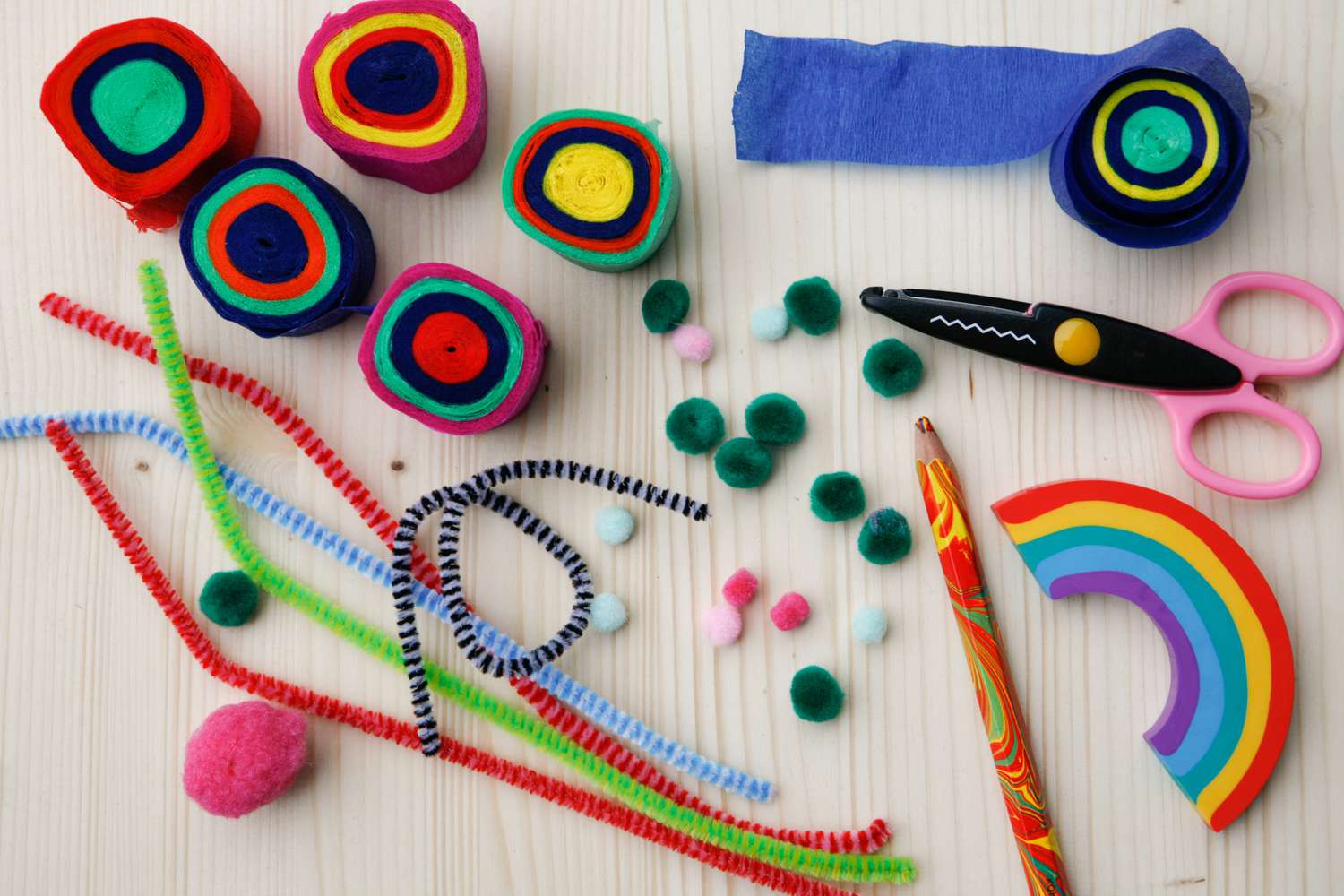

Articles
How To Store Art Canvases
Modified: December 7, 2023
Learn the best ways to store art canvases and protect your valuable articles. Get expert tips and techniques for preserving artwork for years to come.
(Many of the links in this article redirect to a specific reviewed product. Your purchase of these products through affiliate links helps to generate commission for Storables.com, at no extra cost. Learn more)
Introduction
Properly storing art canvases is essential for preserving their beauty and ensuring their longevity. Art canvases are delicate and susceptible to damage from various external factors such as moisture, temperature changes, dust, and pests. By taking the necessary steps to store your art canvases correctly, you can protect them from these potential risks and ensure that they remain in pristine condition for years to come.
In this article, we will guide you through the process of storing art canvases effectively, providing you with valuable tips and insights. We will cover everything from choosing the right storage area to preparing the canvases and selecting suitable containers. Additionally, we will discuss common mistakes to avoid and the importance of monitoring and maintaining stored art canvases. Let’s dive in and discover how to store art canvases properly!
Key Takeaways:
- Properly storing art canvases is crucial for preserving their beauty and value. Choose the right storage area, prepare canvases with archival materials, and monitor conditions to ensure their longevity.
- Avoid common mistakes such as improper handling and neglecting climate control when storing art canvases. Regularly inspect, maintain optimal conditions, and seek professional advice for conservation needs.
Read more: How To Store Canvases
Importance of Properly Storing Art Canvases
Properly storing art canvases is crucial for preserving their integrity and protecting them from potential damage. If not stored correctly, canvases can be exposed to factors that can cause irreversible harm, such as fading, warping, mold growth, or insect infestation.
One of the primary concerns when it comes to art canvas storage is controlling the environment. Fluctuations in temperature and humidity can have adverse effects on the canvas, leading to expansion and contraction, which can result in warping or cracking. Excessive moisture can encourage mold growth, while excessive dryness can cause the canvas to become brittle and prone to tearing.
In addition to environmental factors, exposure to light, both natural and artificial, can cause fading or discoloration of the artwork over time. UV radiation, in particular, can be highly destructive to the pigments used in the artwork, leading to a loss of vibrancy and detail.
Art canvases are also susceptible to physical damage if not stored properly. Dust and dirt particles can settle on the surface of the canvas and become ingrained, leading to a loss of clarity and detail in the artwork. Moreover, canvases can be vulnerable to scratches, dents, and punctures if handled or stored inappropriately.
Proper storage methods can help mitigate these risks and ensure the long-term preservation of the artwork. By creating a controlled environment that maintains stable temperature and humidity levels, you can safeguard the canvas from warping and degradation. Additionally, using protective measures such as archival wrapping and padding can shield the canvas from physical damage and prevent dust and dirt from accumulating on its surface.
Ultimately, proper storage not only preserves the aesthetic quality of the artwork but also protects its value. Art canvases are often valuable investments, and their condition plays a significant role in determining their worth. By taking the necessary steps to store your art canvases correctly, you can maintain their beauty, integrity, and value, ensuring that they can be enjoyed for generations to come.
Choosing the Right Storage Area
When it comes to storing art canvases, selecting the appropriate storage area is crucial for maintaining their quality and longevity. Here are some factors to consider when choosing the right storage space:
Avoid areas prone to extreme temperature and humidity: Fluctuations in temperature and humidity can have detrimental effects on art canvases. It is best to avoid storing them in areas such as basements, attics, or garages where temperature and humidity levels can vary significantly. Instead, opt for a space with controlled climate conditions.
Maintain stable temperature and humidity: The ideal temperature for storing art canvases is around 70 degrees Fahrenheit (21 degrees Celsius), with a humidity level of around 50%. Avoid areas with excessive moisture or dryness, as they can lead to damage or deterioration of the canvases.
Avoid areas exposed to direct sunlight: Sunlight, especially ultraviolet (UV) rays, can cause fading and discoloration of art canvases over time. Choose a storage area away from windows or use UV filtering window treatments or curtains to minimize exposure to sunlight.
Ensure good air circulation: Proper ventilation is essential to prevent the buildup of mold, mildew, or stagnant air. A well-ventilated storage area helps maintain a healthy environment for your art canvases.
Control pest infestation: Pests such as insects can cause significant damage to art canvases. Ensure that the storage area is clean, free from pests, and protected against infestations. Consider using pest control measures such as sealing cracks and crevices and using pest repellents or traps.
Consider security measures: Art canvases are valuable assets and should be stored in a secure location. Choose a storage area that has proper security measures in place, such as locked doors, surveillance cameras, or alarm systems.
By carefully selecting the right storage area, you provide your art canvases with a stable and protective environment, minimizing the risk of damage and ensuring their long-term preservation. Remember to regularly monitor the temperature, humidity, and security of the storage area to maintain optimal conditions for your art canvases.
Preparing Art Canvases for Storage
Before storing your art canvases, it is essential to properly prepare them to ensure their protection and longevity. Here are some steps to follow when preparing your canvases for storage:
Clean the canvases: Begin by gently dusting off the surface of the canvases using a soft, lint-free cloth or a brush designed for delicate surfaces. Remove any loose dirt or debris that may have accumulated on the canvas over time. Avoid using water or cleaning solutions unless absolutely necessary and consult a professional if you are unsure about cleaning a particular artwork.
Inspect for damage: Carefully examine the canvases for any signs of damage such as scratches, tears, or loose threads. If you come across any issues, consider getting them repaired by a professional conservator before storing them to prevent further deterioration.
Remove detachable elements: If your art canvases have detachable elements such as frames or hanging hardware, it is recommended to remove them before storage. Frames can take up additional space and increase the risk of damage, while hanging hardware can also cause protrusions that could potentially harm neighboring paintings.
Apply a protective layer: Depending on the type of artwork and its specific requirements, you may consider applying a protective layer to the surface of the canvas. For example, a layer of archival varnish can provide an additional barrier against dust and moisture. However, make sure to consult with a professional conservator to ensure that the protective layer is suitable for your artwork.
Document the artwork: Before storing your art canvases, it is a good practice to document them by taking photographs. This documentation can serve as a reference for future identification and can be helpful for insurance purposes, exhibitions, or potential sales.
Use archival materials: When preparing your art canvases for storage, always opt for archival-quality materials. Use acid-free tissue paper or glassine paper to wrap the artwork, ensuring that the surface of the canvas is adequately protected. Avoid using plastic materials directly in contact with the canvas, as they can potentially trap moisture and cause damage.
By following these preparation steps, you can ensure that your art canvases are properly safeguarded before being stored. Taking the time to clean, inspect, and protect your artwork will help maintain its quality and prevent any potential damage during the storage process.
Wrapping and Padding Art Canvases
When it comes to storing art canvases, proper wrapping and padding are crucial to protect them from potential damage. Here are some steps to follow when wrapping and padding your art canvases:
Start with a clean and dry surface: Before wrapping your art canvases, ensure that both the canvas and your hands are clean and dry. This will prevent any dirt, moisture, or oils from transferring onto the canvas during the wrapping process.
Use acid-free tissue paper: Begin by wrapping the art canvas with acid-free tissue paper. This paper provides a protective layer and helps prevent any direct contact between the canvas and other materials. Acid-free tissue paper is essential as it prevents any chemical reactions that can cause deterioration or discoloration of the canvas over time.
Avoid direct contact with plastic materials: When wrapping your canvases, it is important to note that direct contact with plastic materials should be avoided. Plastic can trap moisture and potentially lead to the growth of mold or mildew. If you need to use plastic for added protection, make sure to wrap the canvas in acid-free tissue paper first before applying the plastic layer.
Cushion with padding: Once the canvas is wrapped in acid-free tissue paper, use padding material to provide cushioning and protection. This can be done by using foam corners or custom-made padded corners placed on the edges of the canvas to prevent any impact or pressure. It is also advisable to place a sheet of acid-free cardboard or foam board between multiple stacked canvases to prevent them from pressing against one another.
Secure with tape: To keep the wrapping and padding in place, use acid-free artist’s tape to secure everything together. This tape is specifically designed for artwork and ensures that no adhesive residue or discoloration is left on the canvas.
Label and identify: Lastly, it is important to label and identify each wrapped canvas. Use acid-free labels or tags to indicate the artist’s name, title of the artwork, and any other relevant information. This will help you easily locate specific pieces when needed without having to unwrap multiple canvases.
By following these wrapping and padding techniques, you can ensure that your art canvases are properly protected during storage. The combination of acid-free materials, cushioning, and secure wrapping will safeguard the canvases from potential damage caused by handling, impacts, or environmental factors.
Store art canvases vertically to prevent warping. Use acid-free paper or cardboard between canvases to protect the surface. Avoid stacking heavy items on top.
Read more: How To Store Painted Canvases
Selecting Suitable Containers for Art Canvas Storage
Choosing the right containers for art canvas storage is essential to ensure that your canvases remain protected and preserved during their time in storage. Here are some factors to consider when selecting suitable containers:
Size and dimensions: The containers should be spacious enough to accommodate the wrapped canvases without any compression or bending. It is crucial to choose containers that have ample room for the canvases to prevent any pressure or damage to the artwork.
Durability and strength: Opt for containers that are made of sturdy and durable materials such as acid-free cardboard, archival storage boxes, or hard plastic containers. These materials provide adequate protection against external elements and are less likely to deteriorate over time.
Secure closures: Ensuring that the containers have secure closures is vital to protect the canvases from dust, moisture, and pests. Look for containers with tight-fitting lids or seals to create a barrier against these potential risks.
Climate control features: If you have valuable or sensitive artwork, consider containers with climate control features. These containers are equipped with mechanisms to maintain stable temperature and humidity levels, creating an optimal environment for the canvases.
Stackability: If you plan on storing multiple containers, it is beneficial to choose containers that are stackable. This way, you can maximize your storage space while ensuring that the containers remain stable and secure.
Accessibility and organization: Consider how easily you can access the canvases when needed. Look for containers with handles or labeling options, making it easier to identify specific artworks without having to unpack all the containers.
UV protection: If your storage area is exposed to natural or artificial light, consider containers with built-in UV protection. These containers help to minimize the exposure of the canvases to harmful UV rays, reducing the risk of fading or discoloration.
Regular inspection: Regardless of the containers you choose, it is essential to regularly inspect them for any signs of damage or deterioration. Replace any damaged or aging containers to ensure the continued protection of the canvases.
By selecting suitable containers that meet these criteria, you can effectively safeguard your art canvases during storage. Remember to prioritize the protection and preservation of the canvases, choosing containers that are durable, secure, and suited to the specific needs of your artwork.
Avoiding Common Mistakes in Art Canvas Storage
When it comes to storing art canvases, avoiding common mistakes is crucial to preserve their quality and prevent any potential damage. Here are some common mistakes to avoid when storing your art canvases:
Improper handling: One of the most common mistakes is improper handling of art canvases during the storage process. Always handle the canvases with clean and dry hands to prevent any transfer of oils, dirt, or moisture onto the surface. Avoid touching the painted surface directly, and instead, hold the canvas by the edges or use gloves if necessary.
Poor environmental conditions: Failing to control the temperature and humidity levels in the storage area can lead to damage. Avoid storing canvases in areas that are prone to extreme temperature fluctuations or excessive moisture, such as basements or attics. Maintain stable climate conditions with moderate temperature and humidity levels to prevent warping, deterioration, or mold growth.
Inadequate wrapping and padding: Improperly wrapping and padding the art canvases can expose them to potential damage during storage. Avoid using materials that are not acid-free or can trap moisture, such as plastic directly in contact with the canvas. Always wrap the canvases in acid-free tissue paper and use proper padding to protect against impacts and pressure.
Stacking without protection: Stacking art canvases without proper protection can result in damage or marks on the surfaces. Avoid stacking canvases directly on top of each other without using a protective barrier such as acid-free cardboard or foam board. This will help prevent any pressure or friction between the canvases.
Ignoring pest control: Pests can cause significant damage to art canvases if not properly addressed. Neglecting pest control in the storage area can result in infestations that can lead to irreversible damage. Take measures to protect against pests, such as sealing cracks and crevices, using pest repellents or traps, and regularly inspecting for any signs of insects or rodents.
Neglecting regular monitoring: It is essential to regularly check on your stored art canvases to ensure their well-being. Monitor the storage conditions, including temperature, humidity, and security, on a periodic basis. This will allow you to identify and address any issues promptly, minimizing potential damage to the canvases.
Insufficient documentation: Failing to document your stored art canvases can lead to confusion and difficulties in locating specific pieces when needed. Always label and document each canvas, noting relevant information such as the artist’s name, title of the artwork, and any unique identifiers. Take photographs of each canvas for easier reference and record-keeping.
Lack of insurance: Art canvases can be valuable investments, and it is crucial to protect them with proper insurance coverage. Ensure that your stored art canvases are adequately insured in case of any unforeseen events such as theft, fire, or natural disasters.
By avoiding these common mistakes, you can significantly reduce the risk of damage to your stored art canvases. Take the necessary precautions, follow proper handling and storage techniques, and regularly monitor the conditions to ensure the long-term preservation and protection of your valuable artwork.
Monitoring and Maintenance of Stored Art Canvases
Monitoring and maintaining stored art canvases are crucial for ensuring their long-term preservation and protection. Here are some key aspects to consider when it comes to monitoring and maintaining your stored art canvases:
Regular inspections: It is essential to schedule regular inspections of your stored art canvases to identify any signs of damage or deterioration. Check for changes in the canvas, such as warping, discoloration, or mold growth. Look for any pest activity, such as insect droppings or gnawed edges. Early detection allows for prompt action and prevents further damage.
Climate control: Continuously monitor and maintain the temperature and humidity levels in the storage area. Fluctuations in these factors can lead to warping, mold growth, or other forms of damage. Use thermometers and hygrometers to track the conditions and consider investing in a climate control system if necessary to ensure a stable environment for the canvases.
Protection against light: Light exposure, especially UV radiation, can cause fading and damage to art canvases over time. Regularly assess the lighting conditions in the storage area and take measures to protect the canvases from excessive light. Use UV-filtering window treatments, keep the storage area dimly lit, or store the canvases in containers that provide light-blocking properties.
Proper handling: When accessing or moving the stored art canvases, practice proper handling techniques. Always handle the canvases with clean and dry hands or wear gloves to prevent any transfer of oils, dirt, or moisture. Avoid placing unnecessary pressure on the canvases and be mindful of their fragility during transportation.
Documentation: Keep detailed records of your stored art canvases, including information such as the artist’s name, title of the artwork, dimensions, and any unique identifiers. Document any changes or repairs made to the canvases over time. This information will not only help with organization but also serve as valuable documentation for appraisal, insurance, or potential resale.
Conservation measures: If you notice any signs of damage or deterioration during inspections, consult with a professional conservator. They can provide guidance on appropriate conservation measures to restore or stabilize the affected canvases. Avoid attempting DIY repairs unless you have the necessary expertise to prevent further damage.
Periodic re-evaluation and reassessment: Art canvases may require periodic re-evaluation, especially if they are stored for an extended period. Assess the condition of the canvases and evaluate the long-term storage arrangements. Consider whether any changes in storage conditions or materials are needed to ensure continued preservation and protection.
Insurance coverage: Ensure that you have adequate insurance coverage for your stored art canvases. Regularly review your insurance policy to confirm that it accurately reflects the value of the artwork and covers any potential risks. Make updates as necessary to ensure comprehensive protection.
By monitoring and maintaining your stored art canvases diligently, you can proactively address any issues and prevent further damage or deterioration. Regular inspections, appropriate climate control, careful handling, and professional conservation measures will help preserve the integrity and value of your stored art canvases for years to come.
Conclusion
Properly storing art canvases is crucial for preserving their beauty, protecting their integrity, and ensuring their longevity. By following the guidelines and best practices outlined in this article, you can effectively store and safeguard your art canvases, protecting them from potential damage caused by environmental factors, mishandling, pests, or other risks.
Start by selecting the right storage area that provides stable climate conditions, protects against light exposure, and offers proper ventilation. Prepare your canvases for storage by cleaning them, inspecting for damage, and wrapping them in acid-free tissue paper with appropriate padding to provide cushioning and protection. Choose suitable containers that are durable, secure, and provide ample space for the wrapped canvases. Avoid common mistakes such as improper handling, neglecting climate control, stacking without protection, and ignoring pest control.
Monitoring and maintaining your stored art canvases are essential for their long-term preservation. Regularly inspect the canvases for any signs of damage, maintain optimal climate conditions, protect against light exposure, practice proper handling techniques, and document any changes or repairs. Seek professional advice from a conservator for conservation needs, and regularly reassess and evaluate your storage arrangements as needed.
Remember to review your insurance coverage and ensure that your stored art canvases are adequately protected. Art canvases are not only valuable investments but also hold sentimental and artistic importance. Preserving and protecting them allows future generations to appreciate and enjoy these masterpieces.
By following these best practices and taking the necessary steps to store and maintain your art canvases properly, you can ensure their longevity, maximize their beauty, and maintain their value. With proper care and attention, your stored art canvases will continue to be cherished for years to come.
Frequently Asked Questions about How To Store Art Canvases
Was this page helpful?
At Storables.com, we guarantee accurate and reliable information. Our content, validated by Expert Board Contributors, is crafted following stringent Editorial Policies. We're committed to providing you with well-researched, expert-backed insights for all your informational needs.















0 thoughts on “How To Store Art Canvases”